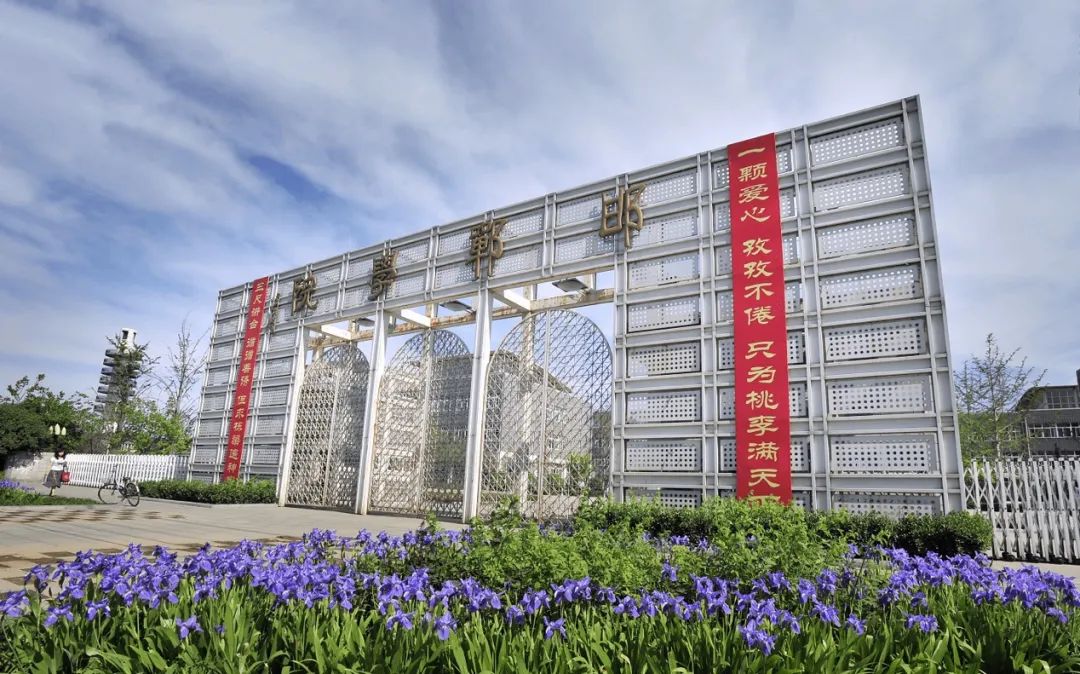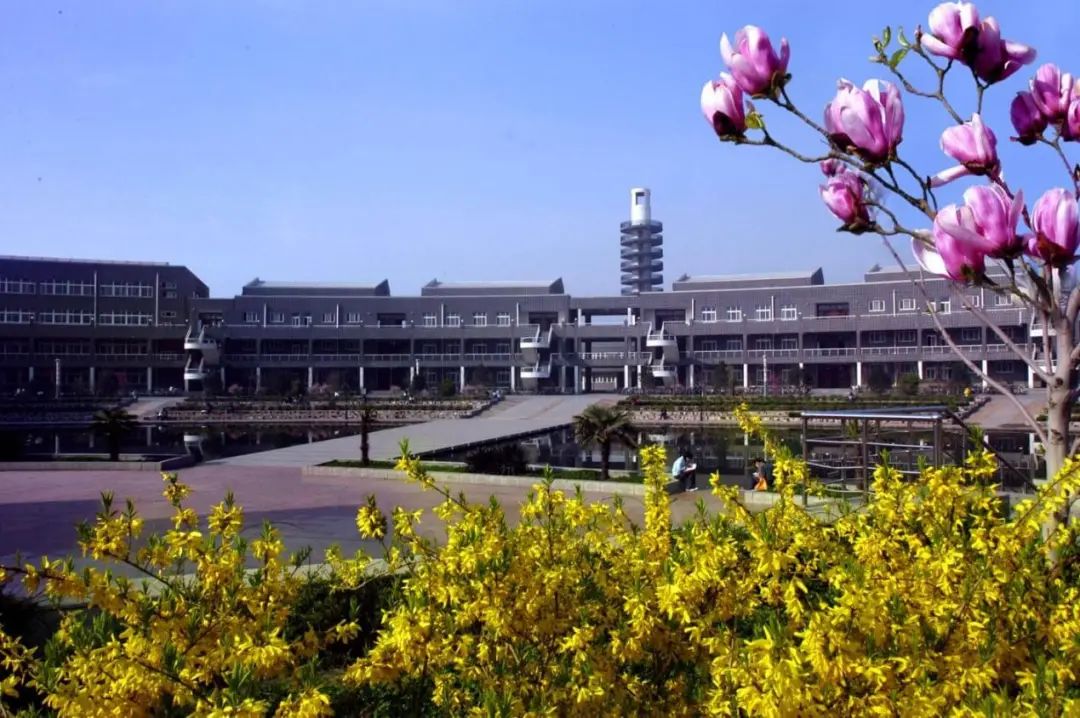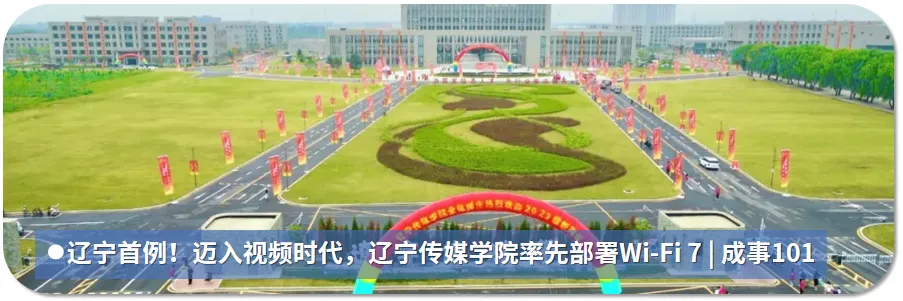
In recent years, to promote the digitalization and intelligence of education, China has introduced a series of documents such as “China Education Modernization 2035” and “Education Informatization 2.0 Action Plan” and has fully implemented the strategy for digital transformation in education. In this process, the campus network system, as the infrastructure of smart campuses, has become a key driver for achieving digital transformation in education.

To align with this trend, Handan University has partnered with Huawei to build a high-quality smart campus network based on Huawei’s all-optical campus network solution and all-scenario Wi-Fi 7, which not only greatly meets the internet needs of teachers and students in teaching, research, learning, and daily life but also lays a solid foundation for the university’s future digital transformation, enriching the connotation of the smart campus and serving the overall development strategy of the school.
Building a High-Quality Campus Network
Achieving Full Wireless Network Coverage
Handan University, located in the national historical and cultural city, national excellent tourist city, Taijiquan holy land, and the capital of idioms in Handan City, Hebei Province, is a public full-time ordinary undergraduate institution with 1,248 staff members, 18,075 full-time undergraduate students, and 5,732 adult education students. The campus covers an area of 1,193 acres with a building area of 586,000 square meters. It is recognized as a national advanced unit for greening, one of the first national bases for the inheritance of excellent traditional Chinese culture in ordinary colleges and universities, and a civilized campus in Hebei Province.
It is reported that Handan University officially launched the upgrade and renovation project of the campus network this year. The project adopts principles of high reliability and security, practical technology with appropriate foresight, high performance and standardization, openness and standardization, manageability, and expandability, aiming to build a technologically advanced, high-quality, secure, and efficient campus network that achieves “full coverage” of wireless networks in the East Campus, West Campus, Apartment Village, South Campus, and Kindergarten Teacher Campus (including outdoor areas, excluding student dormitories).
To better enhance the internet needs of teachers and students, Handan University clearly proposed the following specific requirements at the early stage of campus network construction:
First, in terms of network architecture
Both the East and West Campus backbone networks are required to interconnect through 100G optical fibers; the aggregation switch to core switch must also be interconnected via 100G optical fibers; access switches must connect to aggregation switches through 10G optical fibers; and the wireless network within buildings should adopt an all-optical deployment model. All APs are powered directly via optical-electrical hybrid cables and interconnected with access switches through 2.5G optical fibers. The campus network’s exit devices and lines need to implement redundancy design, and the overall network architecture must meet relevant level protection requirements.
Second, in terms of wireless access
Different scene-specific deployment designs require the use of various types of products, such as using mainstream panel AP solutions for signal coverage in offices, ensuring independent signal coverage in each room without obstruction or dead zones for optimal experience; while for ordinary classrooms, large classrooms, canteens, auditoriums, libraries, and sports stands, APs will be used for coverage, providing a high-performance wireless access environment for teaching, office, and living areas, achieving full wireless network coverage across the campus, with Wi-Fi 7 coverage inside buildings.
Third, in terms of internet authentication
The school hopes to adopt a flexible access and exit authentication mechanism, where students use “phone number + student ID binding, with phone number priority” authentication, while faculty members use “employee ID priority” authentication, and external experts and temporary users also adopt faculty member authentication methods.
Fourth, in terms of operation and maintenance management
The school hopes to deploy a network management and operation system to monitor the operation quality of the entire Wi-Fi system and provide a network dashboard, enabling real-time awareness of key indicators such as Wi-Fi speed, concurrent terminal numbers, and air delay; it also supports monitoring of user application access quality, analysis and protection of key applications and user access experience, timely boundary troubleshooting of network or application faults, and ensures a good internet experience during energy-saving periods, achieving “0 interruptions” for critical services.
Based on this, Handan University collaborates with Huawei to adopt a high-quality all-optical campus network solution and all-scenario Wi-Fi 7, creating a high-quality campus network that achieves “full coverage” of wireless networks across the entire school.
All-Optical Network Foundation
Wi-Fi 7 Restructuring Experience
As a branch network connecting the campus backbone, Huawei’s all-optical campus network solution features three major advantages: “extremely simple deployment, extremely simple access, and extremely simple operation and maintenance,” which lays a solid foundation for Handan University to build a high-quality campus network.
First, from the perspective of “extremely simple deployment”
Huawei’s all-optical campus network solution adopts a simplified architecture. Compared to the traditional three-layer networking architecture consisting of core layer, aggregation layer, and access layer, it uses a two-layer network architecture composed of core layer and access layer, which not only reduces the number of weak current rooms but also saves 77% in wiring, significantly reducing network construction costs. The entire network also supports multiple connection methods, including optical fibers, network cables, and optical-electrical hybrid cables.
Second, from the perspective of “extremely simple access”
Huawei’s all-optical campus network solution, based on optical-electrical PoE technology, allows the central switch to provide 300m long-distance PoE++ power supply to remote access units. The uplink supports 2.5GE, and the downlink provides gigabit access for high-speed internet, with flexible expansion options of 4/8/16 ports. Additionally, the optical-electrical hybrid cable method can enhance bandwidth by ten times, and replacing optical modules can complete bandwidth upgrades without rewiring, achieving “no renovation” for the next ten years, meeting the continuous evolution needs of future campus networks.
Finally, from the perspective of “extremely simple operation and maintenance”
Huawei’s all-optical campus network solution supports remote port expansion, and remote modules are plug-and-play without planning or configuration, reducing management nodes by 80%. Additionally, with a rich central switch, it can achieve integrated management of wired and wireless networks, providing an “easy-to-maintain” network that better assists the school in completing network upgrades.
On this basis, Handan University has also taken the lead in adopting all-scenario Wi-Fi 7 technology, achieving “full coverage” of the campus network and “restructuring” the network experience. Among them, Handan University has adopted Huawei’s new generation of high-quality Wi-Fi 7, which supports dual-band operations at 2.4GHz and 5GHz simultaneously, providing four spatial streams with speeds reaching 4.3Gbps. Furthermore, based on the new Wi-Fi 7 technology, this AP panel greatly enhances user experience with wireless networks; it supports optical-electrical hybrid cables and all-optical solutions, facilitating flexible deployment for the school and effectively saving investment costs.
At the same time, Huawei’s high-quality Wi-Fi 7, equipped with dynamic zoom smart antenna technology, supports omnidirectional and high-density coverage modes, dynamically adjusting coverage modes based on different scenarios. The entire device adopts a tri-radio design, including one 2.4G radio, one 5G radio, and one 6G/5G radio, increasing concurrent users by 50%. Additionally, the entire device provides twelve spatial streams, with speeds reaching 18.67Gbps, allowing users to enjoy a high-speed wireless experience.
In fact, Huawei’s all-scenario Wi-Fi 7 technology not only enhances bandwidth but also achieves three “enhancements”: improved signal coverage capability, with co-located signal strength increasing by 100%; enhanced business concurrency capability, with concurrency performance improving by 50%; and enhanced business protection capability, with business latency under 50ms, truly providing teachers and students with a high-speed internet experience.
It is worth mentioning that Handan University has also built a digital map of the campus network based on iMaster NCE-CampusInsight, realizing intelligent operation and maintenance, further achieving “network operation quality visualization, enabling visible network experience; quick positioning of network issues, ensuring wireless experience; and easy backtracking of historical issues, making network operation and maintenance easier.”
In terms of “one map visualization,” the four-dimensional information visualization across the entire network allows for intuitive perception of business experience. Four-dimensional information visualization refers to network status visibility, terminal visibility, user experience visibility, and application experience visibility; while proactive experience perception includes device failures and poor application/user experience, allowing for an “overview on one screen”; by providing intelligent to-do items, it can concentrate display anomalies, providing a concise entry point for operation and maintenance, along with Wi-Fi signal coverage visualization, achieving feedback on signal coverage quality, and “RF heat maps” for diagnostics; for faults that do not recur, troubleshooting difficulties, and high technical requirements, the campus network digital map also provides a “one-second boundary” function, achieving “instant fault positioning and clear problem boundaries”; the “one-click optimization” capability ensures one-click protection of important business experiences.
Moreover, based on the campus network digital map, Handan University accurately predicts tidal times and AP election for energy-saving and network performance “dual protection” through big data. Additionally, through AI-driven automatic energy-saving and energy consumption visibility and management, Handan University has achieved “green energy-saving” for the campus network, effectively reducing campus energy consumption and carbon emissions, creating a healthy and comfortable learning and living environment for teachers and students.
Building the Next Generation Campus Network
Setting a New Benchmark for Smart Campuses
Undoubtedly, based on Huawei’s all-optical campus network solution and all-scenario Wi-Fi 7, Handan University has truly built a high-quality smart campus network, greatly enhancing the internet experience for teachers and students while achieving “people-oriented” smart campus services, setting a new benchmark for the construction of next-generation campus networks.
Therefore, the smart campus network construction at Handan University undoubtedly provides more reference value for the campus network construction of other universities.

First, advanced architecture, extremely simple deployment.
It can be seen that based on Huawei’s all-optical campus network solution and all-scenario Wi-Fi 7, Handan University has achieved unified management of the entire network, and the new network can be automatically deployed regardless of size or distance, enabling rapid business activation. Additionally, the deployment of ultra-wide access Wi-Fi 7, 100G campus backbone, and optical-electrical hybrid cables ensures that the overall architecture meets the performance, capacity, high reliability, and technical application needs of the school for the next 5 to 10 years.
Second, ubiquitous access, refined operation.
The high-quality campus network built by Handan University not only achieves “full coverage” of wireless networks in various locations such as the East Campus, West Campus, Apartment Village, South Campus, and Kindergarten Teacher Campus, but also allows wired, wireless, and IoT devices to connect to the campus network anywhere, enabling teachers and students to better enjoy high-quality network services. Based on high-performance business gateways (BRAS), it also achieves unified management, centralized authentication, and access control for all campus users, with pay-as-you-go billing. Additionally, by deploying a unified user authentication and billing gateway, combined with various authentication methods, it further enhances the campus user’s access experience; based on bandwidth and billing strategies for services, it also achieves refined operations; plus, with thousands of application identifications, it enables refined management of services and users.
Third, integrated management, intelligent operation and maintenance.
Based on the Huawei iMaster NCE-CampusInsight unified management analysis platform, the campus network digital map helps Handan University apply artificial intelligence in the operation and maintenance field. By collecting operational data (such as terminal logs) across the entire network using intelligent engines, combined with big data, machine learning, and other advanced analytical technologies, the user experience within the network is digitized and visualized, assisting administrators in promptly identifying network issues and achieving predictive maintenance for faults, further improving and enhancing the school’s network experience.
Currently, Handan University is advancing its transformation development in accordance with the requirements of “China Education Modernization 2035,” aiming to build a high-level application-oriented university with distinctive features in the new era, promote the construction of a first-class regional university and first-class disciplines, and continuously enhance its service capabilities to the local area, promoting the school’s high-quality development.
From this perspective, the high-quality campus network built by Handan University based on Huawei’s all-optical campus network solution and all-scenario Wi-Fi 7 will further assist the school’s smart campus construction, comprehensively enhance the school’s digital service capabilities and management decision-making levels, and push the school’s digitalization and intelligence to a higher level.





Every time you “look,” I can see it!


